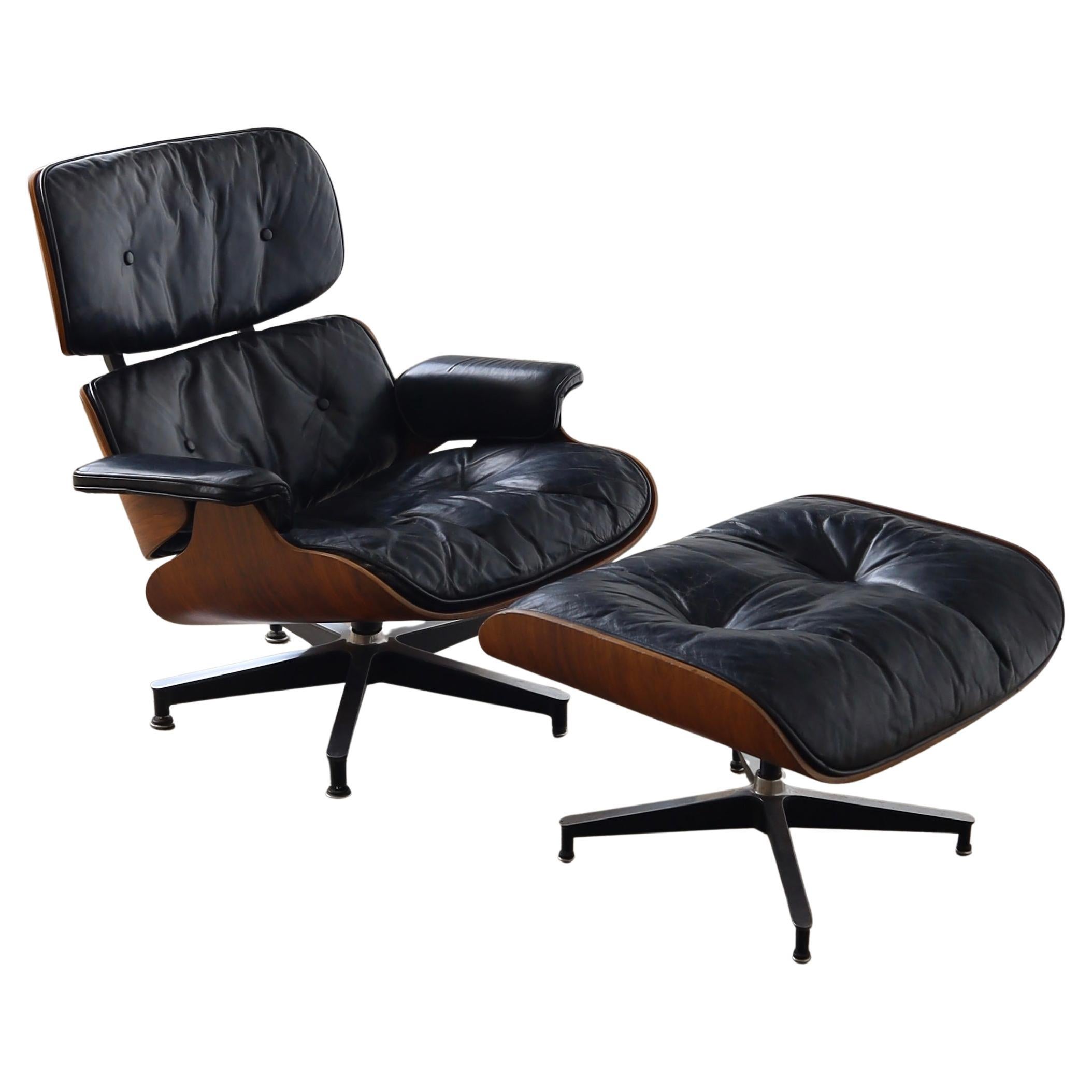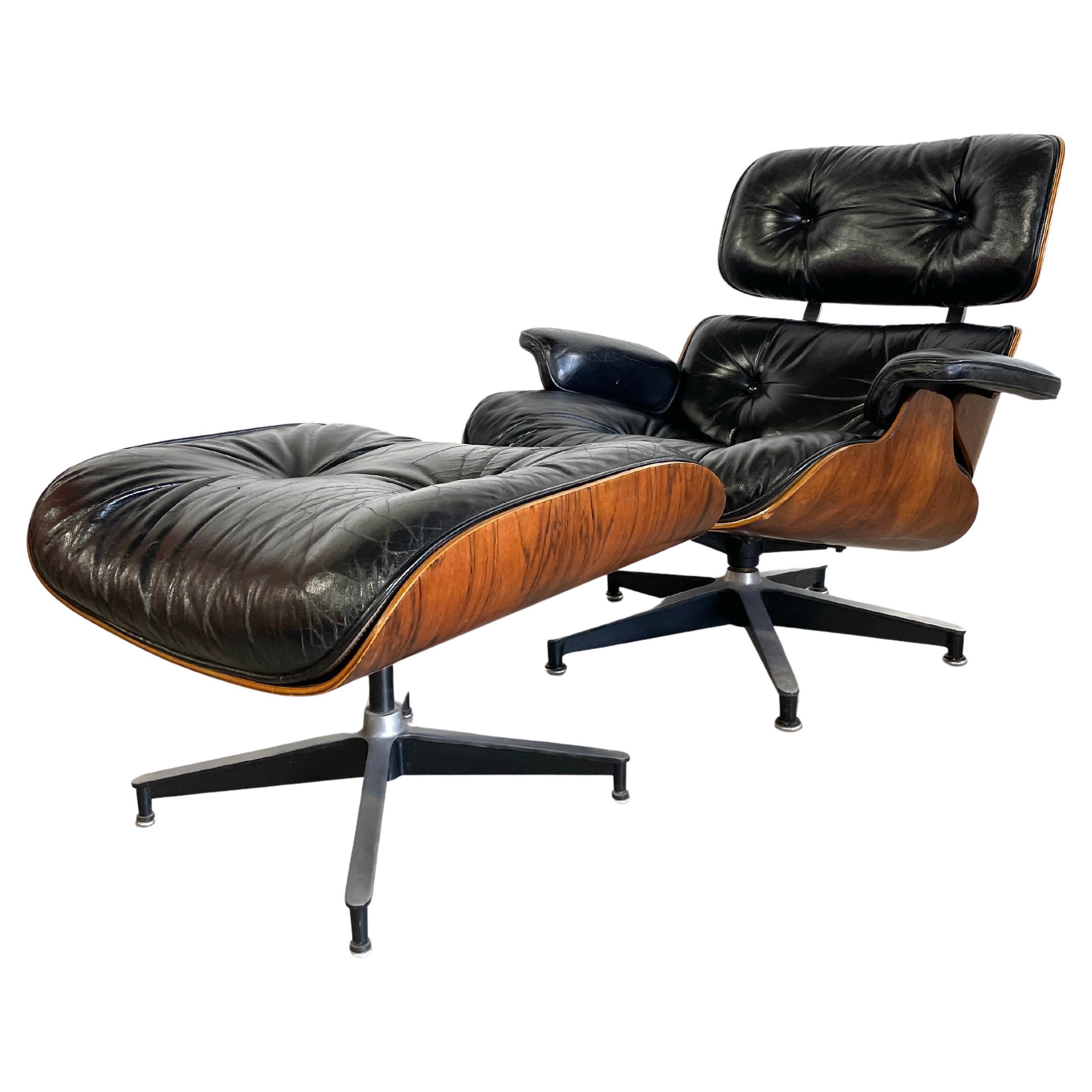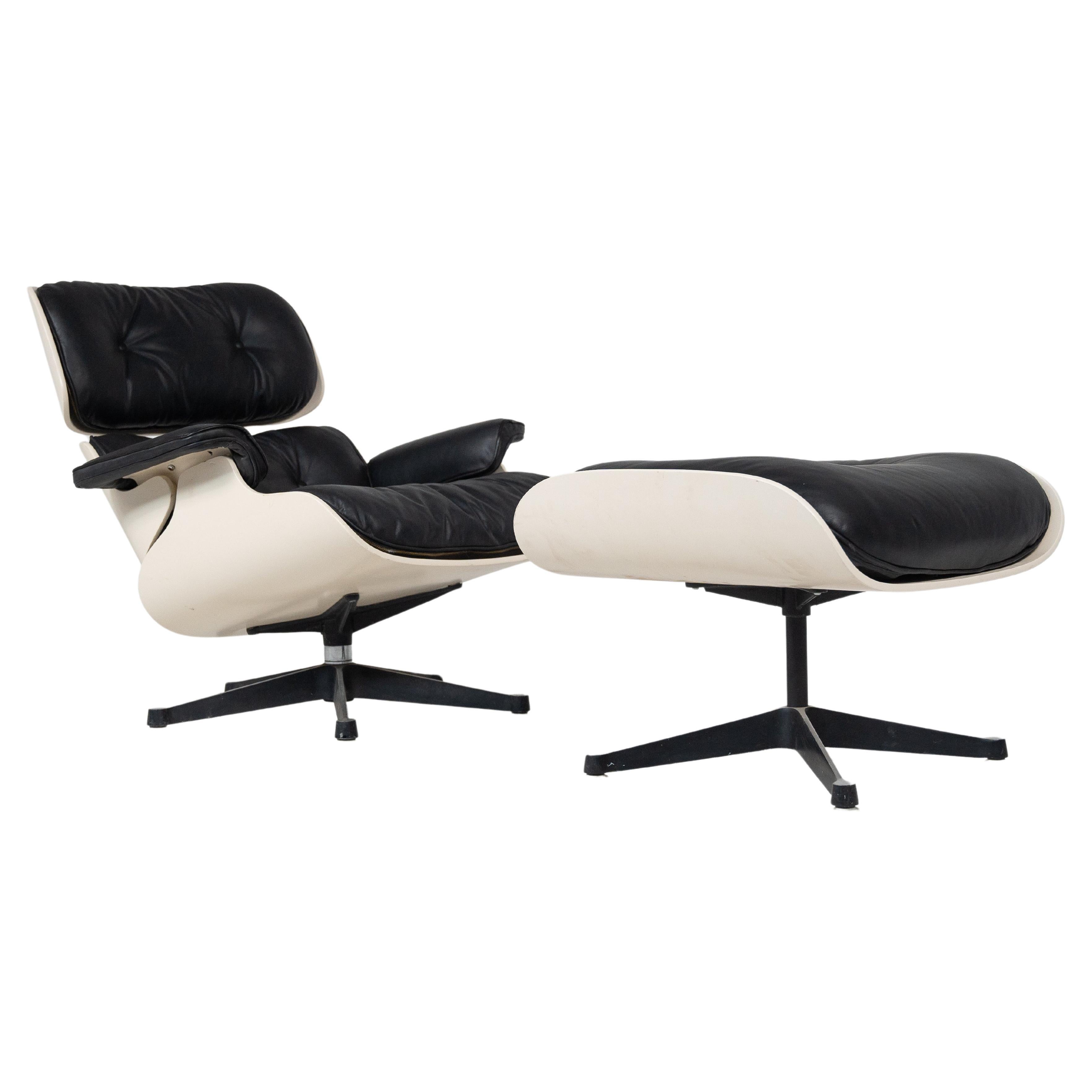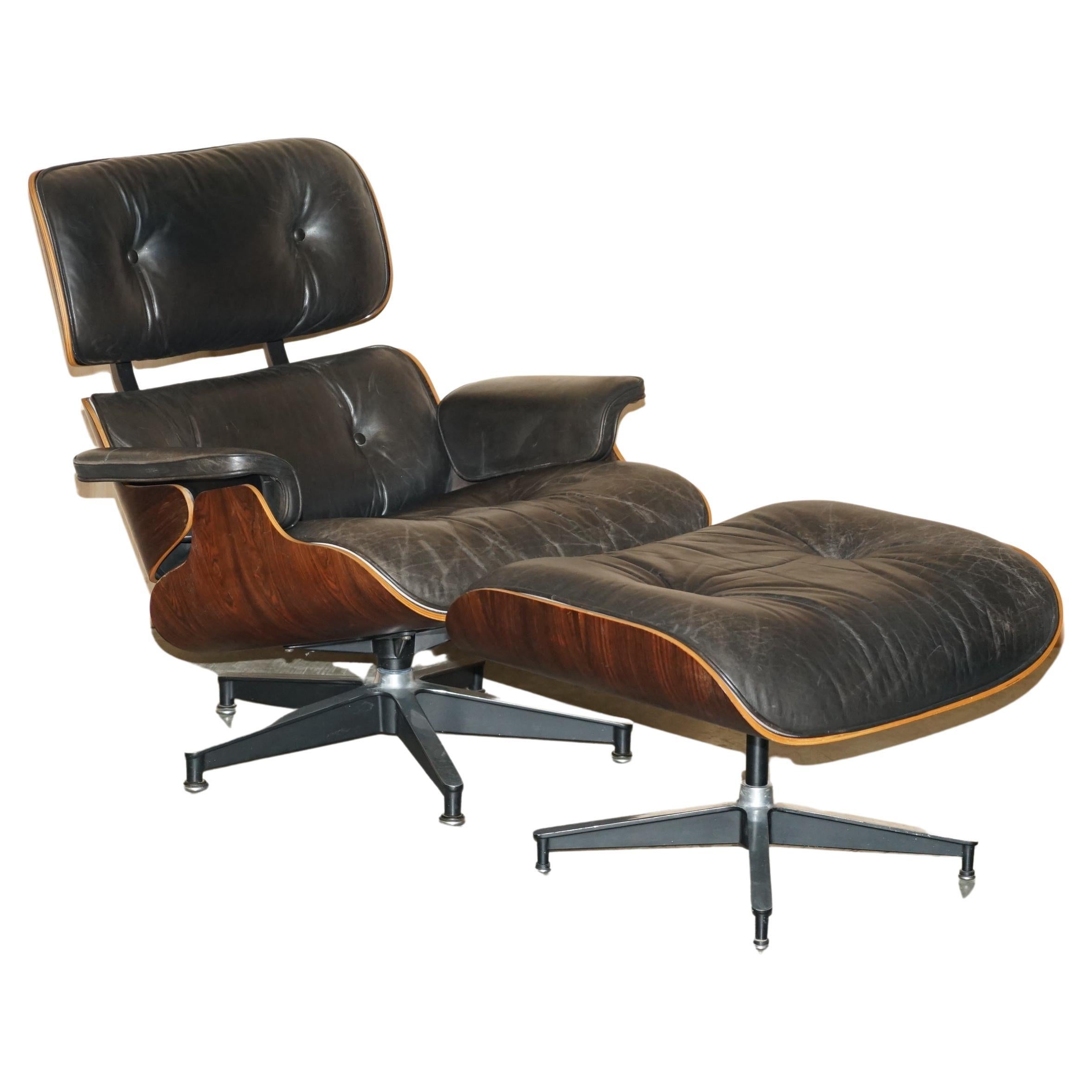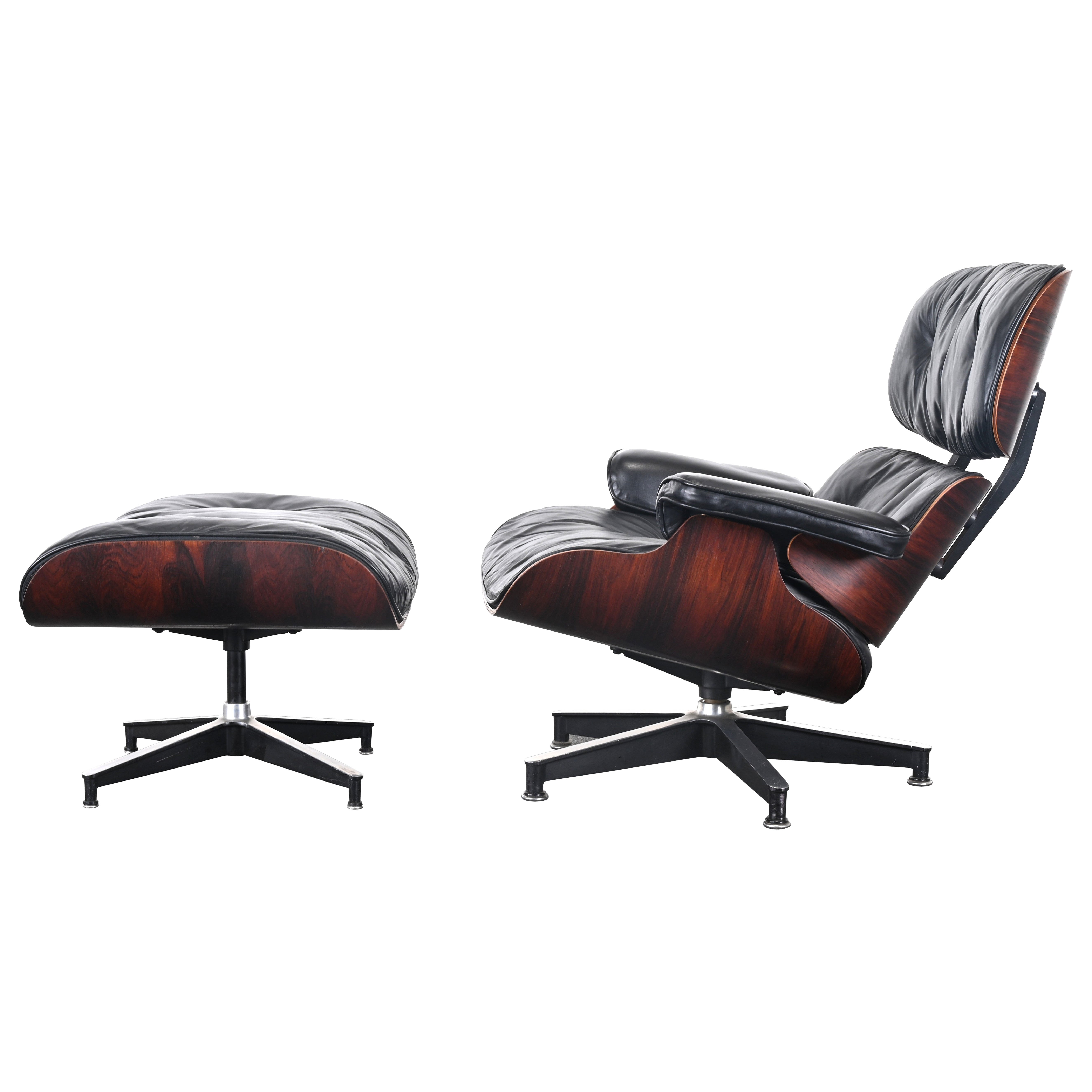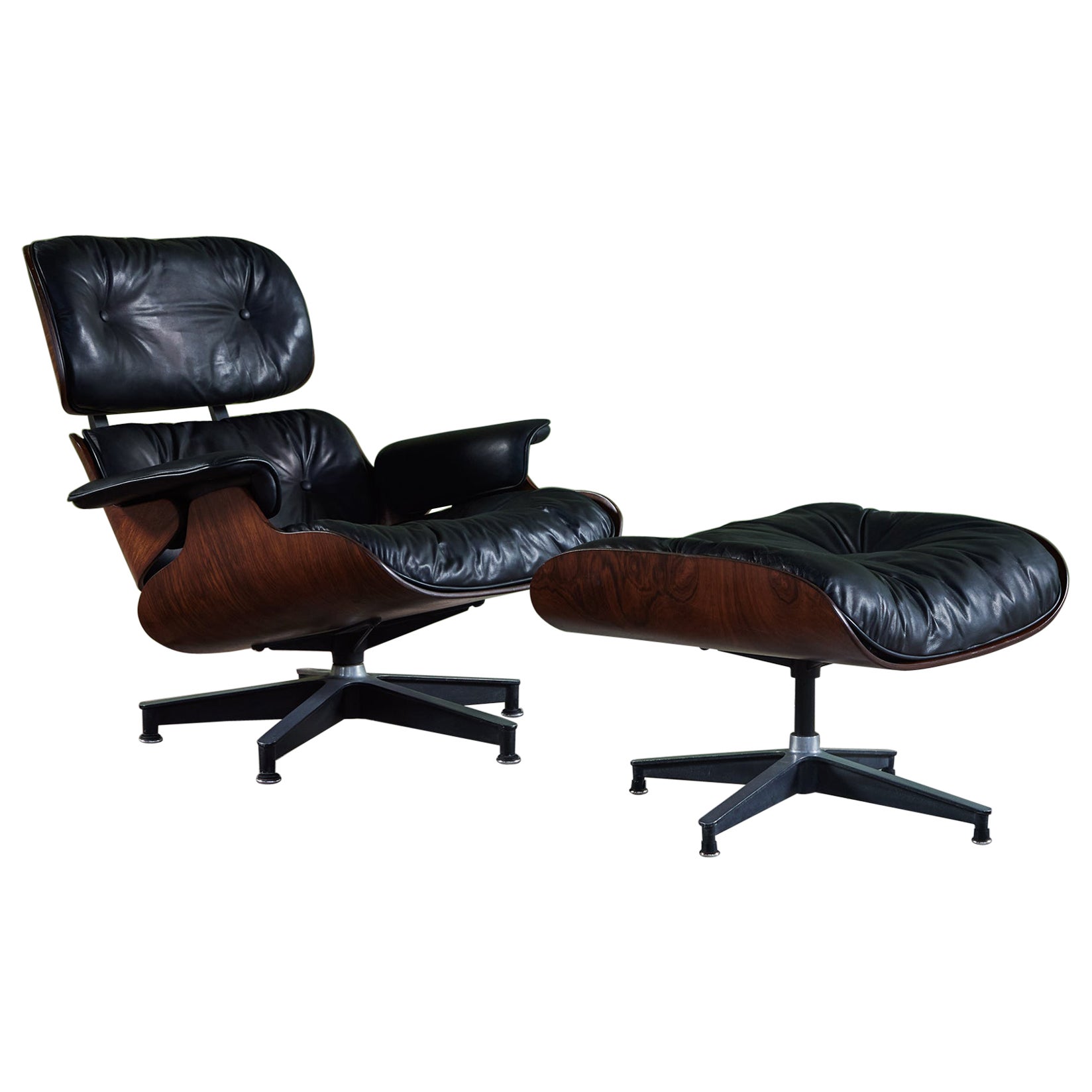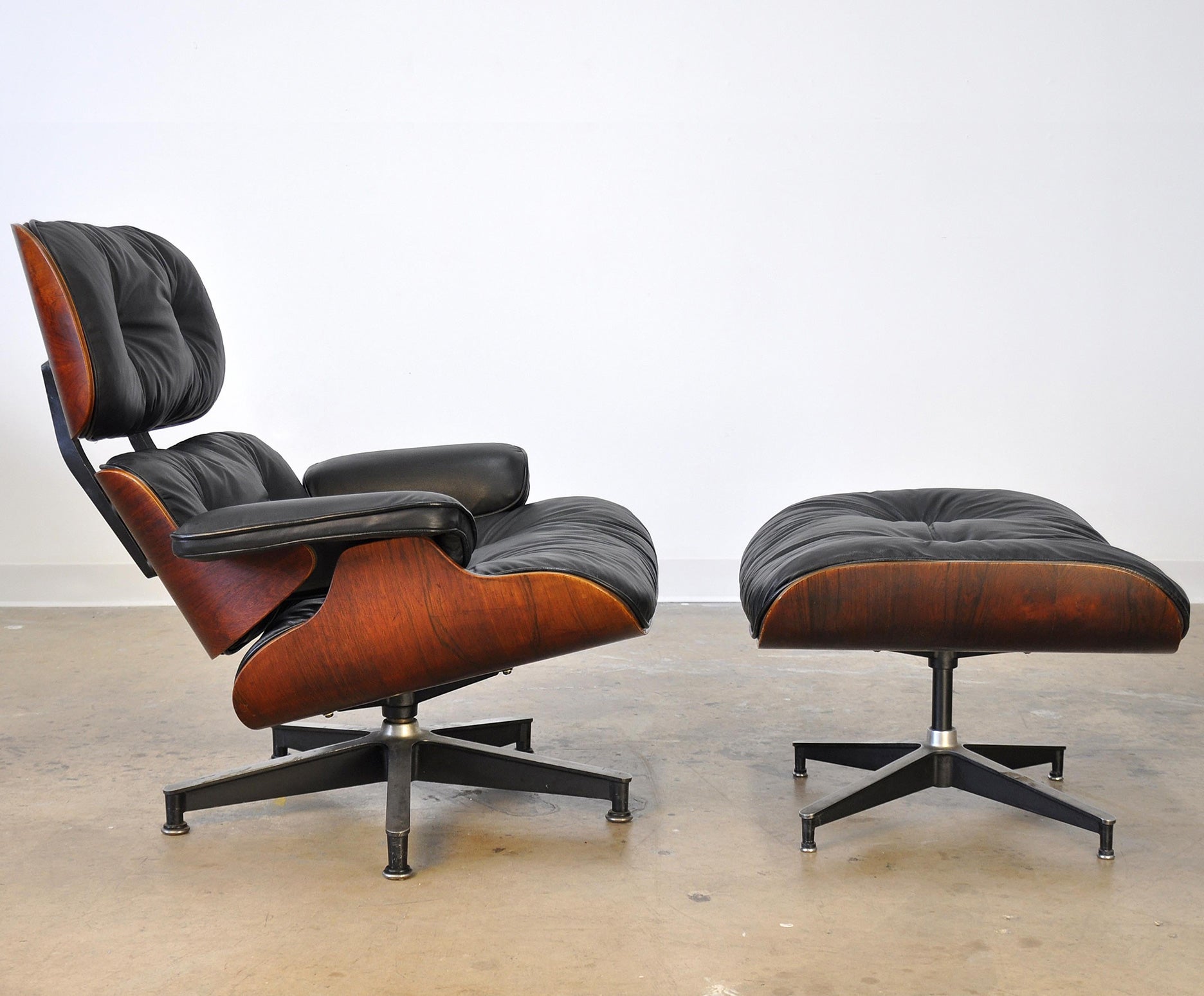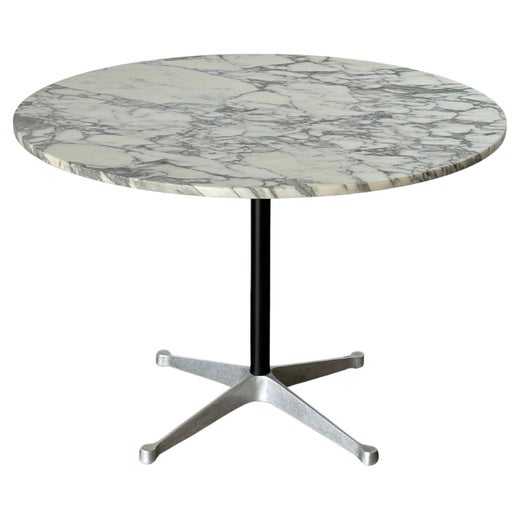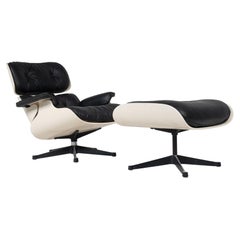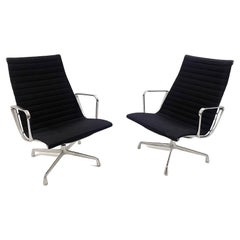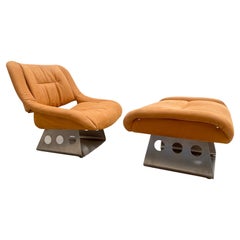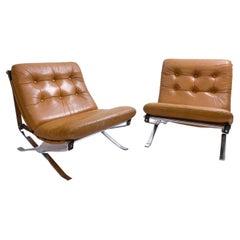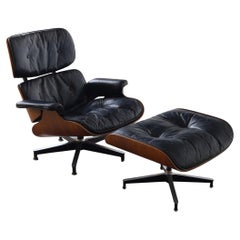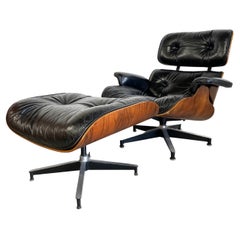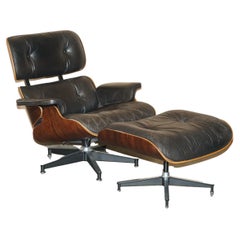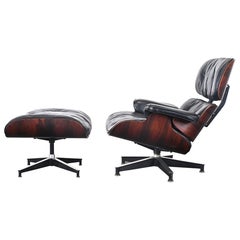Mid-Century Lounge Chair and Ottoman by Charles & Ray Eames for Herman Miller
About the Item
- Creator:Charles and Ray Eames (Designer),Herman Miller (Designer)
- Design:
- Dimensions:Height: 32.29 in (82 cm)Width: 31.89 in (81 cm)Depth: 27.56 in (70 cm)
- Style:Mid-Century Modern (Of the Period)
- Materials and Techniques:
- Place of Origin:
- Period:
- Date of Manufacture:20
- Condition:Wear consistent with age and use. Minor fading.
- Seller Location:Brussels, BE
- Reference Number:1stDibs: LU2265339044772
Eames Lounge Chair and Ottoman
Long before it was the pièce de résistance in a collector’s office or an upscale bachelor pad — landing in ample design magazines, on television and in well-appointed offices over the years — the Eames lounge chair was a fresh, subversive new take on a classic club chair and a culmination of experimentation by its inventive creators.
Charles and Ray Eames (1907–78; 1912–88) met while studying at the Cranbrook Academy of Art, the prestigious Michigan institution that drew such illustrious design minds as Florence Knoll, Eero Saarinen and more. After graduation, they formed the Eames Office, where they spent much time exploring and formulating new techniques in bent plywood and fiberglass with the goal of producing affordable furniture for a mass market. The Eames lounger, on the other hand — with its signature wood-grain back and sumptuous (usually black) leather seat — was different.
While the couple’s DCW chairs, introduced in the 1940s, prioritized ease of production and affordability of materials, the lounge, which debuted in 1956, was Charles and Ray’s interpretation of luxury furniture. And to the Eameses, luxury meant, above all, comfort. The couple famously called the lounge chair and ottoman “a special refuge from the strains of modern living” and described their design as having the “warm receptive look of a well-used first baseman’s mitt.”
Although the seat makes use of the same bentwood technique the Eameses pioneered using their famous “Kazam! Machine” (a handmade apparatus for molding plywood) for their DCW chairs, it tops off this frame with supple leather over a plump, upholstered shape.
Ever fascinated by ergonomics, the Eameses carefully calibrated the pitch of the seat. It has enough flexibility for comfort but not so much that stability is sacrificed. This precise shape comes by way of three connected plywood pieces, which, on early models were covered in five layers of Brazilian rosewood; owing to an early 1990s-era embargo on the material, however, the Brazilian rosewood has since been replaced with either ash, walnut or palisander. The accompanying ottoman is the icing on the comfort cake, inviting the sitter to quite literally kick back and relax.
Today, imitations of the Eames lounge chair and ottoman abound. The seat is currently manufactured by both Herman Miller and Vitra, and when it was launched initially by the former, the supporting marketing blitz emphasized the chair’s versatility — an effort that, given the seat’s current ubiquitousness, was clearly successful.
Charles and Ray Eames
Charles Eames and Ray Eames were the embodiment of the inventiveness, energy and optimism at the heart of mid-century modern American design, and have been recognized as the most influential designers of the 20th century. The Eameses were lovers of folk craft who had a genius for making highly original chairs, tables, case pieces and other furniture using traditional materials and forms.
As furniture designers, filmmakers, artists, textile and graphic designers and even toy and puzzle makers, the Eameses were a visionary and effective force for the notion that design should be an agent of positive change. They are the happy, ever-curious, ever-adventurous faces of modernism.
Charles Eames (1907–78) studied architecture and industrial design. Ray Eames (née Beatrice Alexandra Kaiser, 1912–88) was an artist, who studied under the Abstract Expressionist painter Hans Hofmann. They met in 1940 at the Cranbrook Academy of Art in suburban Detroit (the legendary institution where Charles also met his frequent collaborator Eero Saarinen and the artist and designer Harry Bertoia) and married the next year.
His technical skills and her artistic flair were wonderfully complementary. They moved to Los Angeles in 1941, where Charles worked on set design for MGM. In the evenings at their apartment, they experimented with molded plywood using a handmade heat-and-pressurization device they called the “Kazam!” machine. The next year, they won a contract from the U.S. Navy for lightweight plywood leg splints for wounded servicemen — vintage Eames splints are coveted collectibles today; more so those that Ray used to make sculptures.
The Navy contract allowed Charles to open a professional studio, and the attention-grabbing plywood furniture the firm produced prompted George Nelson, the director of design of the furniture-maker Herman Miller Inc., to enlist Charles and (by association, if not by contract) Ray in 1946. Some of the first Eames items to emerge from Herman Miller are now classics: the Eames chair, the LCW, or Lounge Chair Wood, and the DCM, or Dining Chair Metal, supported by tubular steel.
The Eameses eagerly embraced new technology and materials, and one of their peculiar talents was to imbue their supremely modern design with references to folk traditions.
Their Wire chair group of the 1950s, for example, was inspired by basket weaving techniques. The populist notion of “good design for all” drove their molded fiberglass chair series that same decade, and also produced the organic-form, ever-delightful La Chaise. In 1956 the Eames lounge chair and ottoman appeared — the supremely comfortable plywood-base-and-leather-upholstery creation that will likely live in homes as long as there are people with good taste and sense.
Charles Eames once said, “The role of the designer is that of a very good, thoughtful host anticipating the needs of his guests.” For very good collectors and thoughtful interior designers, a piece of design by the Eameses, the closer produced to original conception the better, is almost de rigueur — for its beauty and comfort, and not least as a tribute to the creative legacy and enduring influence of Charles and Ray Eames.
The original Eames furniture for sale on 1stDibs includes chairs, tables, case pieces and other items.
- ShippingRetrieving quote...Shipping from: Brussels, Belgium
- Return Policy
More From This Seller
View AllVintage 1970s Mid-Century Modern Armchairs
Leather, Wood
Vintage 1960s Mid-Century Modern Armchairs
Metal
Vintage 1970s Italian Mid-Century Modern Armchairs
Metal
Vintage 1960s Italian Mid-Century Modern Chairs
Metal
Vintage 1960s Italian Mid-Century Modern Armchairs
Wood
Vintage 1970s Italian Lounge Chairs
Leather
You May Also Like
Vintage 1960s American Mid-Century Modern Lounge Chairs
Leather, Rosewood
Vintage 1970s American Mid-Century Modern Lounge Chairs
Metal
Vintage 1960s European Mid-Century Modern Lounge Chairs
Leather, Hardwood
Vintage 1960s American Mid-Century Modern Lounge Chairs
Metal
Vintage 1950s American Mid-Century Modern Lounge Chairs
Leather, Rosewood
Vintage 1960s American Mid-Century Modern Lounge Chairs
Aluminum
Read More
The 21 Most Popular Mid-Century Modern Chairs
You know the designs, now get the stories about how they came to be.
Iconic Furniture Makes This 1958 Midwestern Home a True Mid-Century Gem
Designer Susan Yeley turned to 1stDibs to outfit an Indiana home with standout pieces that complement its modernist style.
